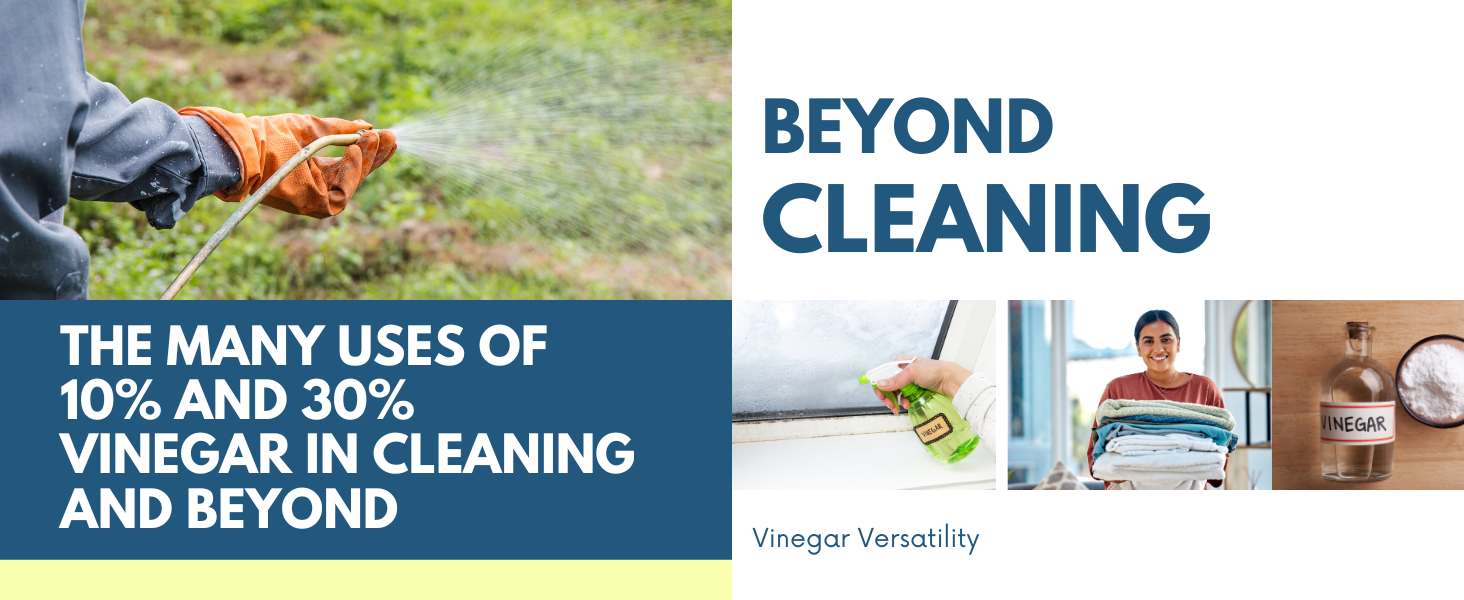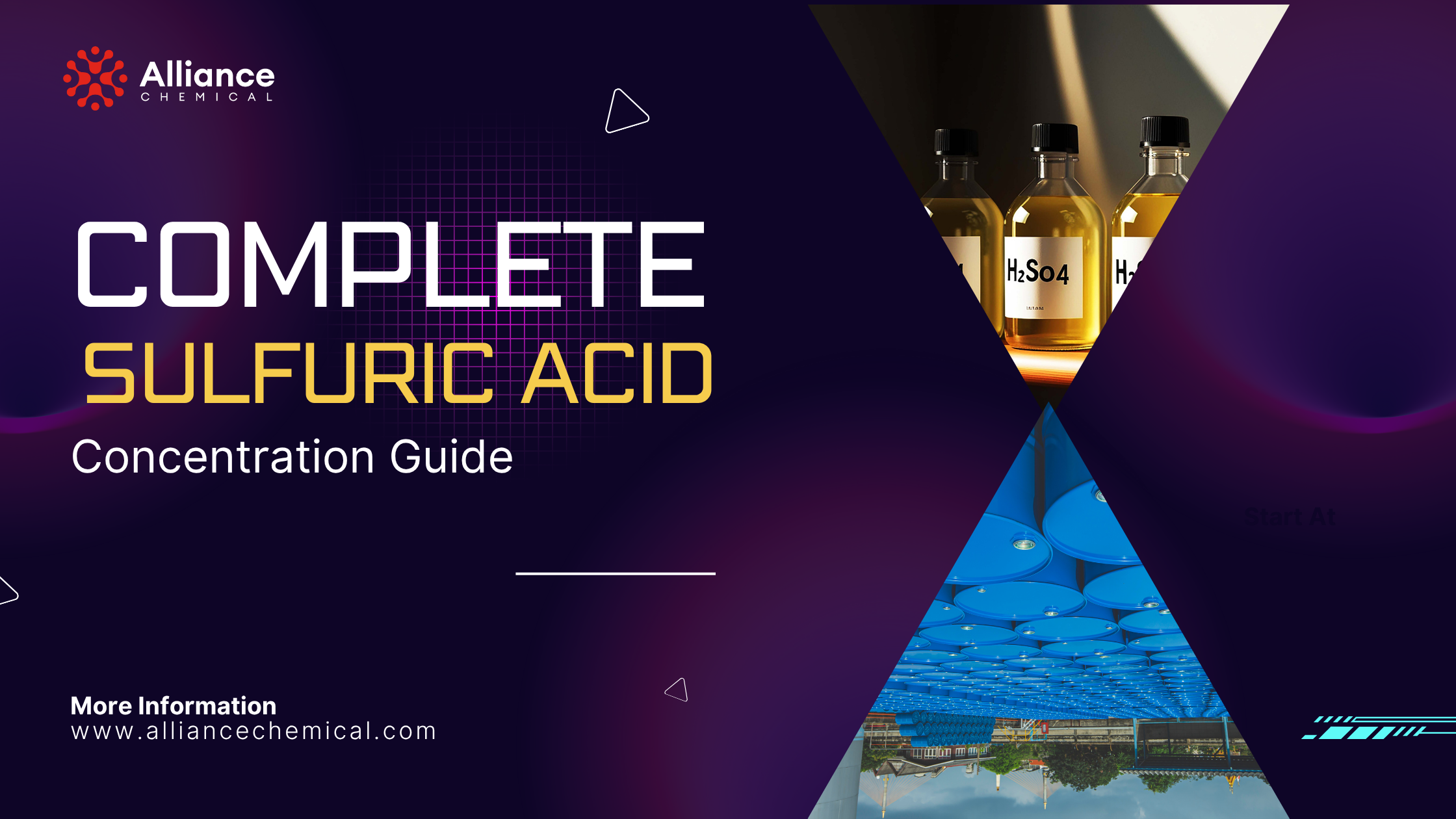
The Many Uses of 10% and 30% Vinegar in Cleaning and Beyond
Summary
Quick Navigation
- 1. Introduction
- 2. The History of Vinegar
- 3. The Science Behind Vinegar
- 4. The Power of 10% and 30% Vinegar
- 5. Applications in Cleaning and Disinfection
- 6. Gardening and Agriculture
- 7. Industrial and Commercial Uses
- 8. Safety Precautions and Handling
- 9. Complementary Chemicals from Alliance Chemical
- 10. Conclusion
1. Introduction
"The discovery of a new dish does more for the happiness of mankind than the discovery of a star." — Jean Anthelme Brillat-Savarin
Vinegar has been an essential component of human life for millennia, serving not only in culinary delights but also as a powerful agent in cleaning, agriculture, and industry. While most people know the 5% variety in their kitchen cabinets, 10% and 30% vinegar offer significantly enhanced potential. This comprehensive guide explores their historical background, scientific underpinnings, and a wide range of applications.
If you’re looking to upgrade your household cleaning routine, optimize weed control in your garden, or streamline an industrial process, 10% vinegar and 30% vinegar might be the natural, eco-friendly answer. Read on to discover how these high-concentration vinegars can transform the way you approach everyday challenges and specialized tasks alike.
2. The History of Vinegar
"Vinegar: the sour wine that sweetens life." — Anonymous
The term “vinegar” traces back to the Old French “vin aigre”, meaning “sour wine.” Archaeological evidence suggests humans have used vinegar for over 10,000 years, initially as a byproduct of spoiled wine but soon cherished for its preservation, medicinal, and hygienic attributes.
Ancient civilizations like the Egyptians, Greeks, and Romans recognized vinegar’s antiseptic virtues. Hippocrates prescribed it to treat wounds; in medieval Europe, the fabled “Four Thieves Vinegar” guarded against the Bubonic Plague, illustrating its enduring image as a protective agent. By World War I, doctors relied on vinegar to clean wounds when supplies ran short, proving its ongoing clinical relevance.
Today, vinegar’s legacy extends far beyond the kitchen. It’s ubiquitous across industries, from preserving food to powering various chemical applications in labs and factories. Its evolution from a basic sour wine into a powerful cleaning and sanitizing solution epitomizes humanity’s knack for leveraging nature’s gifts.
3. The Science Behind Vinegar
All vinegars, regardless of concentration, revolve around a simple chemistry: the fermentation of ethanol by Acetobacter bacteria, producing acetic acid (CH3COOH) mixed with water. The potency of vinegar lies in the acetic acid percentage—5% for everyday table use, or up to 30% for robust tasks.
Understanding Acetic Acid Concentrations
- 5% Household Vinegar: Common for cooking and light cleaning—relatively mild acidity.
- 10% Vinegar: Roughly double the acetic acid of standard vinegar, effective for moderate cleaning and weed control.
- 30% Vinegar: A substantial jump in acidity, enabling heavy-duty cleaning, pH adjustments in industrial processes, and more aggressive herbicidal action.
pH and Its Impact
On the pH scale (0–14), vinegar typically sits between ~2.4 (for 5%) and ~1.5 (for 30%). Lower pH translates to stronger acidity and thus greater ability to dissolve minerals, kill microbes, and modify surfaces or soil conditions. But with amplified capabilities come higher risks—proper handling becomes essential.
4. The Power of 10% and 30% Vinegar
Embracing higher acetic acid concentrations—10% or 30%—unlocks numerous possibilities that standard 5% vinegar cannot achieve with the same efficiency.
Enhanced Solvent and Descaling Action
Vinegar is known to dissolve calcium deposits and soap scum. At 10% and 30% concentrations, the solvent effect intensifies, cutting through stubborn limescale or caked-on grime that 5% vinegar might struggle with.
Increased Microbial Kill Rate
A more acidic environment wreaks havoc on bacteria, fungi, and certain viruses by disrupting cell membranes. Consequently, stronger vinegars excel at disinfection, making them suitable for environments where cleanliness is paramount—from home bathrooms to commercial kitchens.
Cost-Effective, Biodegradable Alternative
Many chemical cleansers or herbicides pose environmental hazards. Vinegar—especially when used responsibly—offers a more sustainable choice. Its biodegradability lessens ecological impact, a crucial consideration in both household and industrial contexts.
"Stronger vinegar doesn’t just intensify an existing property; it amplifies the range of tasks vinegar can handle."
5. Applications in Cleaning and Disinfection
"Cleanliness is next to godliness." — John Wesley
Vinegar’s reputation as a home-cleaning champion is well-deserved. Yet when you reach into the realm of 10% and 30% concentrations, the breadth and depth of cleaning use-cases expand significantly.
5.1 Household Cleaning with 10% Vinegar
- Limescale Removal: Use a 1:1 mix of water and 10% vinegar to descale kettles, showerheads, or coffee makers, soaking them for up to 30 minutes before rinsing.
- Stain & Odor Control: Tackle persistent odors in drains or trash bins. Pour a small amount, let it sit, then flush with water.
- Mirrors & Glass: Dampen a microfiber cloth with diluted vinegar. The extra acidity helps break down fingerprints and residue for a streak-free shine.
5.2 Heavy-Duty Cleaning with 30% Vinegar
- Oven & Grill Degreasing: The potent acetic acid can break through tough, baked-on grease. Let it soak briefly before scrubbing.
- Rust Reduction: Soak rusty hand tools or components in a diluted solution (e.g., 1 part 30% vinegar to 2 parts water) for faster rust dissolution than standard vinegar.
- Mold & Mildew Remediation: Spray onto affected surfaces; let it stand to penetrate spores. Follow up with ventilation or a mild brushing.
Tip: For even higher disinfection synergy, consider following vinegar application with Hydrogen Peroxide (3%). This two-step approach can maximize microbial kill without resorting to bleach or harsher chemicals.
6. Gardening and Agriculture
"To plant a garden is to believe in tomorrow." — Audrey Hepburn
Gardeners, small-scale farmers, and commercial agriculturalists increasingly favor natural, biodegradable alternatives to synthetic products. Vinegar at higher concentrations can be a robust tool.
6.1 Natural Herbicide
- Weed Eradication: 30% vinegar is a non-selective herbicide. Spray directly on weed foliage during sunny conditions, as the heat intensifies the burn. Expect visible wilting within 24 hours.
- Driveways & Sidewalks: Prevent regrowth in cracks and seams, an eco-friendly method compared to chemical weedkillers.
- Approved for Organic Use: Many organic certifications permit vinegar-based herbicides, providing a safer alternative for biodiversity.
6.2 Soil pH Management
Plants like azaleas, blueberries, and certain ornamentals flourish in acidic soil. Diluted higher-strength vinegar can momentarily acidify soil:
- Targeted Spot Treatments: Water diluted vinegar near acid-loving plants. Avoid oversaturating, as excessive acidity can harm beneficial soil microorganisms.
- Regular Monitoring: Periodic soil pH tests guide application frequency and concentration.
6.3 Pest Repellence
- Ants & Slugs: Spraying diluted vinegar around garden beds forms a mild barrier. The acidity deters many crawling insects.
- Rodent & Small Animal Deterrent: The pungent odor can discourage critters from nibbling on vegetables or decorative plants.
7. Industrial and Commercial Uses
"Innovation is the ability to see change as an opportunity—not a threat." — Steve Jobs
Vinegar’s shift from an ancient household remedy to a modern industrial reagent underscores its versatility. High concentration vinegars offer a safer, often more sustainable, option for diverse sectors.
7.1 pH Neutralization & Chemical Reactions
- Water Treatment: Industrial processes can produce alkaline effluents. Vinegar neutralizes these streams, aiding compliance with environmental standards.
- Manufacturing Processes: Certain polymer or resin production pathways demand precise acidity levels, where 30% vinegar functions as a cost-effective, easily handled acidulant.
7.2 Food Industry
- Preservative & Pickling Agent: Extended shelf life for pickles, sauces, or condiments.
- Surface Sanitizer: Enhanced acidity helps disinfect processing equipment without relying on bleach or quaternary ammonium compounds.
7.3 Maintenance & Metal Cleaning
- Rust Removal: Large-scale usage in factories for cleaning machinery or preventing oxidation.
- Adhesive Cleanup: Tools and assembly lines can accumulate glue residue that high-acid vinegar dissolves efficiently.
7.4 Textile & Dye Industries
In textile factories, vinegar can stabilize dye baths and remove excess alkali during washing or rinsing cycles, reducing environmental load from harsh chemical disposals.
8. Safety Precautions and Handling
"An ounce of prevention is worth a pound of cure." — Benjamin Franklin
Vinegar might be natural, but concentrations beyond 10% can irritate skin, eyes, or airways. Safety measures are critical, particularly for 30% solutions.
8.1 Personal Protective Equipment (PPE)
- Gloves: Use nitrile or neoprene to avoid chemical burns or rashes.
- Eye & Face Protection: Goggles or face shields to prevent splashes at higher strengths.
- Long-Sleeved Clothing: Minimizes accidental exposure.
8.2 Storage & Labels
- Containers: Opt for corrosion-resistant plastics or glass. Avoid reactive metals like aluminum, which vinegar can corrode.
- Sealed & Labeled: Mark containers with acetic acid percentage and hazard warnings. Keep away from children and pets.
- Temperatures: Store in a cool, dry area out of direct sunlight.
8.3 Reactive Hazards
- Chlorine Bleach: Mixing vinegar and bleach creates chlorine gas, extremely dangerous if inhaled.
- Ammonia or Strong Bases: Use caution. The neutralization can be exothermic and release intense fumes.
8.4 First Aid
- Skin Contact: Flush with water. Remove contaminated clothing. Seek medical advice if irritation lingers.
- Eye Exposure: Rinse eyes for at least 15 minutes. Consult a healthcare professional.
- Inhalation: Move to fresh air. If symptoms persist, get medical attention.
9. Complementary Chemicals from Alliance Chemical
"Synergy is better than my way or your way. It's our way." — Stephen Covey
Maximize your vinegar-based strategies by pairing high-concentration vinegar with other top-grade products from Alliance Chemical:
9.1 Cleaning & Disinfection
- Isopropyl Alcohol (70% USP): Follow vinegar with IPA for a multi-phase approach to disinfect surfaces in labs, kitchens, or hospitals.
- Hydrogen Peroxide (3%): Great one-two punch for bathroom or countertop sanitization.
9.2 Industrial & Agricultural Aids
- Citric Acid 50% Solution: Complement or replace certain vinegar processes for descaling or pH tweaking.
- Sodium Hypochlorite 12.5%: Use caution if employing bleach; never mix directly with vinegar.
9.3 Equipment & Containers
High-strength vinegar demands secure, corrosion-resistant storage solutions. Explore our Equipment & Containers Collection for jugs, drums, and more, designed to handle acidic materials without compromising product quality.
10. Conclusion
"Knowledge is power." — Sir Francis Bacon
From an ancient brew of “sour wine” to a high-performance cleaning and agricultural marvel, vinegar’s evolution spotlights humanity’s resourcefulness. Upping the acetic acid to 10% or 30% transforms a simple household staple into a potent multi-tool—capable of dissolving stubborn grime, vanquishing weeds, adjusting soil pH, and aiding industrial processes, all while maintaining eco-friendly credentials.
Though harnessing higher acetic acid levels can be extremely rewarding, it also underscores the need for diligent safety measures and proper usage to avoid accidental damage to surfaces, plants, or health. By understanding each concentration’s unique capabilities and pairing them with complementary chemicals from Alliance Chemical, you’re well on your way to a greener, more efficient approach to cleaning, gardening, and industrial practices.
Ready to Experience the Full Power of Vinegar?
Browse 10% Vinegar or 30% Vinegar at Alliance Chemical, or reach out for expert consultation. Our high-purity products and dedicated support ensure the best possible results for all your vinegar-based endeavors.




